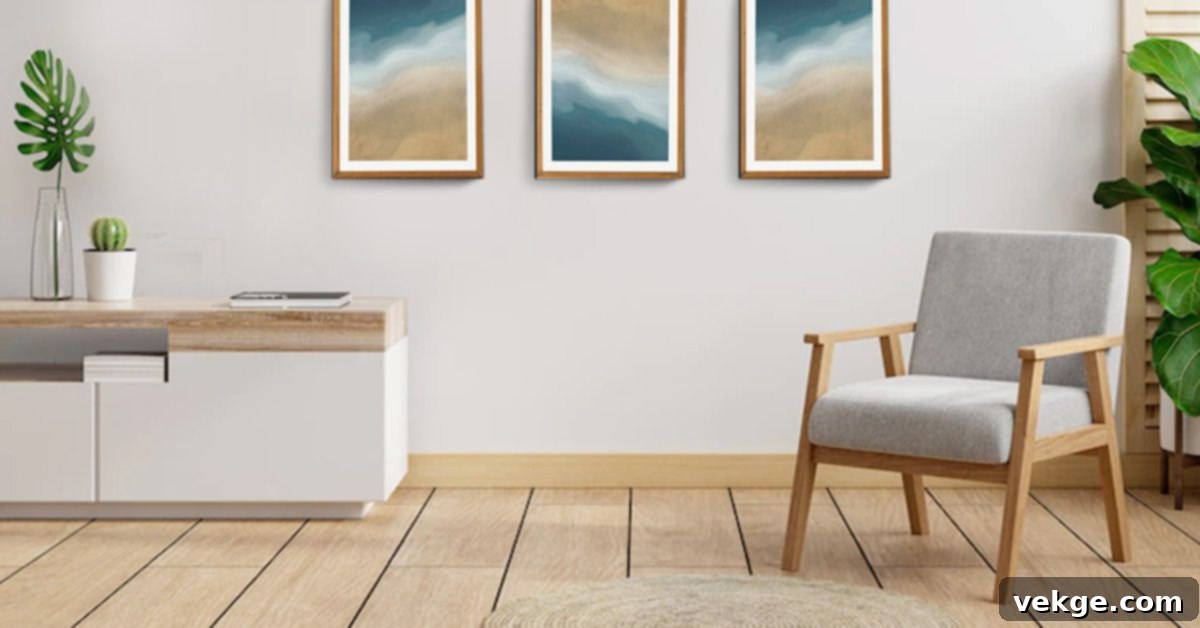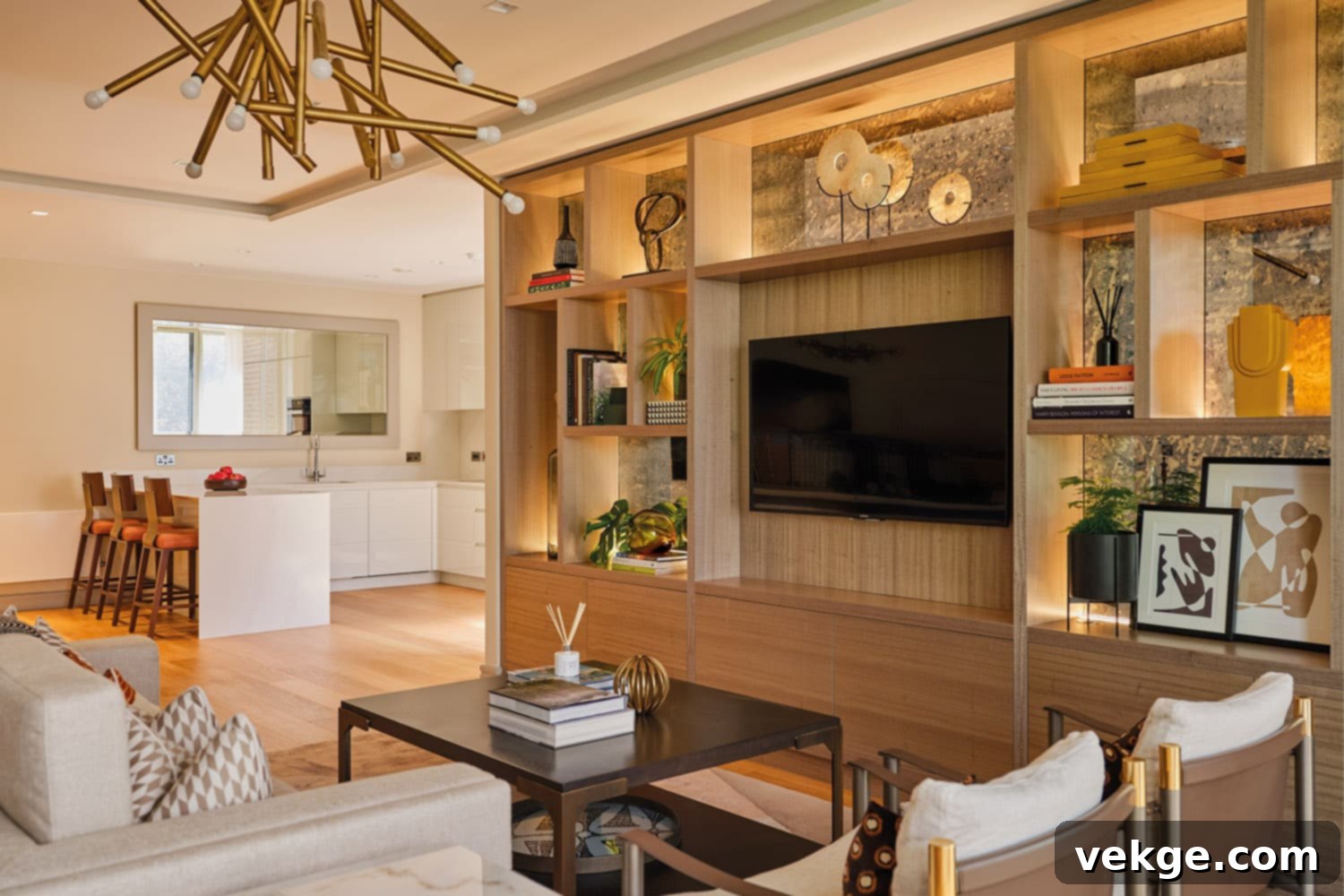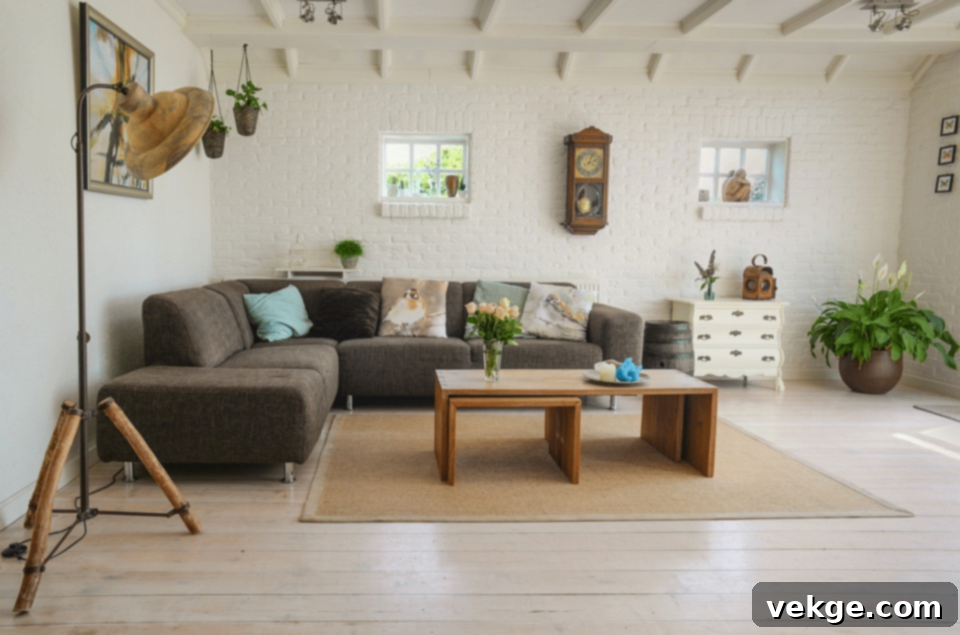Achieving Eclectic Elegance: Your Ultimate Guide to Blending Modern and Vintage Home Decor
The allure of blending modern and vintage styles in home decor lies in its ability to create spaces that feel both fresh and familiar. This dynamic approach goes beyond mere aesthetics; it imbues your home with a rich sense of history, character, and stimulating nostalgia. Far from being a fleeting trend, this style offers a unique opportunity to craft an environment that tells a story, reflects your personality, and evolves gracefully over time. However, the key to its success is striking a harmonious balance, ensuring the final design is sophisticated, elegant, and cohesive, rather than chaotic.
Whether your personal preference leans towards a maximalist abundance of treasures or a minimalist appreciation for clean lines, there are countless creative ways to seamlessly integrate vintage home decor elements with your existing modern space layout. This guide will walk you through essential strategies to master this art, helping you transform your living areas into truly timeless havens.
Choose a Cohesive Color Palette for Harmony
One of the foundational steps in successfully blending modern and vintage styles is establishing a unifying color palette for your entire space. This crucial decision acts as the guiding principle for all subsequent decor choices, simplifying the process and ensuring a consistent, intentional theme throughout your home. A well-chosen palette creates a visual thread that connects disparate pieces, making them feel like they belong together.
Given that this style often incorporates unique, sometimes ornate, pieces, it’s wise to let your furnishings and decor take center stage. For this reason, neutral colors often work best as a backdrop for modern vintage decor. Hues like soft greys, warm beiges, classic whites, and subtle off-whites provide a serene and sophisticated canvas, allowing the textures, forms, and stories of your chosen pieces to truly shine. These understated tones prevent the room from feeling overwhelmed and provide a sense of calm and openness.
If you have a fondness for more vibrant hues, consider incorporating deep, bold shades strategically. Rich jewel tones such as emerald green, sapphire blue, or ruby red, or earthy tones like terracotta and mustard yellow, can be used as accent colors on a single wall, through textiles, or in smaller decorative items. The trick is to use these bolder colors to highlight specific areas or pieces, ensuring they complement rather than compete with the overall neutral base. This thoughtful application adds depth and personality without sacrificing the elegant balance of the blended style.
Decide on an Impactful Backdrop

The architectural elements and overall structure of your room serve as the primary backdrop for your blended design. Original features like intricate crown molding, hardwood floors, large windows, and high ceilings naturally offer a superb foundation, lending instant character and a sense of grandeur to your space. These inherent qualities effortlessly highlight both modern and vintage pieces, creating a dialogue between the past and present.
Even if your space lacks these inherent architectural advantages, you can still create an equally compelling backdrop. Introduce “raw” or elemental features to add depth and texture. Consider classically styled fireplaces, which evoke timeless elegance, or incorporate weathered textural wall finishes like limewash or Venetian plaster for an aged, tactile feel. Exposed brickwork can bring an industrial-chic edge that complements both rustic vintage and sleek modern elements beautifully. These additions inject personality and visual interest, making any room feel more established and unique.
To further enhance the backdrop, integrate large contemporary art pieces. A striking abstract painting or a bold photographic print can serve as a powerful modern anchor, providing a fresh contrast to vintage furniture or decorative objects. When dealing with smaller rooms, these large pieces can also create significant impact. If your goal is to maximize the sense of space and light, minimize window treatments, opting for simple roller blinds or sheer curtains, and always remember the golden rule: avoid over-cluttering the design. A thoughtful, curated approach will ensure every element contributes to the overall aesthetic without overwhelming the eye.
Select a Captivating Statement Piece
For maximum impact and to establish a focal point within a modern room, the strategic placement of a bold, large-scale statement piece is paramount. This chosen item, ideally an antique or a significant vintage find, will become the anchor of your modern vintage decor, around which the rest of the space revolves. Think of it as the star of the show, dictating the room’s tone and drawing immediate attention.
When selecting your statement piece, consider items like a grand vintage armoire, a striking mid-century modern sofa, an ornate gilded mirror, or a majestic antique dining table. The key is its scale and unique character. Once chosen, design the surrounding elements to support and enhance it. This often involves downplaying other modern elements – opting for simpler, more understated contemporary furniture and accessories – allowing the vintage vibe of your centerpiece to truly shine. This thoughtful arrangement creates a magnetic attraction and sets a harmonious tone for the entire room, resulting in a beautifully integrated blended style.
For an even more dramatic effect, consider placing your statement piece against a contrasting contemporary backdrop, such as a crisp, neutral-colored, or plain wall. This juxtaposition creates a sense of visual tension and intrigue, instantly elevating the piece and giving it a gallery-like presence. This formula works exceptionally well in neutral spaces that might otherwise lack a focal point or a sense of drama. The contrast achieved through this pairing provides a compelling focal point. This strategy can also be applied to large-scale decorative elements like an intricately patterned vintage rug anchoring a minimalist living room, or a grand, antique chandelier hanging above a sleek, modern dining table.
Consider Function and Form in Design

When integrating older pieces into a modern design, it’s essential to thoughtfully consider both their function and their form. Vintage furniture, in particular, often boasts intricate details like decorative flourishes, delicate marquetry, and elaborate wood carving—craftsmanship rarely found in mass-produced contemporary furniture. These unique characteristics are precisely what give vintage items their undeniable charm and historical depth.
The art of successfully mixing vintage and modern styles lies in a thoughtful interplay of lines and silhouettes. Aim for a healthy mix of curves, which often characterize older pieces, and the clean, streamlined forms typical of modern design. This dynamic tension prevents a room from feeling too rigid or too overtly traditional. For instance, pairing a curvaceous antique armchair with a minimalist, geometric coffee table creates visual interest and balance. Design experts often further enhance this blend by mixing different metal finishes—such as combining the warm glow of brass with the cool sheen of chrome or the industrial feel of wrought iron. This thoughtful layering of materials and forms helps to ground the design and ensures that no piece looks dated or out of place, instead creating a cohesive, evolving aesthetic.
Beyond aesthetics, consider the practicality of each piece. An antique writing desk might be beautiful, but is it functional for modern work? A vintage cabinet might be stunning, but does it offer sufficient storage? Modern design prioritizes utility, and blending styles successfully means finding vintage pieces that not only complement the contemporary aesthetic but also serve a purpose in your everyday life. This balance of beauty and utility ensures your space is not only visually appealing but also highly livable.
Blend Rich Textures and Diverse Materials
Introducing a variety of textures and materials is a powerful strategy to add depth, visual interest, and a sense of luxury to your blended interior. Imagine combining the rich, tactile quality of woven fabrics like chunky knits or rough linen with the sleekness of polished metals, or juxtaposing the raw, organic feel of rustic wood with smooth, cool marble. This deliberate interplay not only highlights the inherent contrasts between modern and vintage elements but also creates a layered and elegant atmosphere that feels intentionally curated and deeply personal.
For striking textural contrasts, consider pairing a sleek, modern metal lamp (perhaps in brushed nickel or black steel) with a renowned vintage chair design upholstered in a rich velvet or distressed leather. This combination instantly elevates the room, inviting touch and drawing the eye. While vintage pieces are undeniably captivating, too many ornate or heavily textured items can lead to a cluttered or overwhelming sensation. To achieve the perfect equilibrium, balance them with silky textures, unblemished smooth surfaces, and minimalist modern pieces.
For example, placing a luxurious silk cushion on a rugged, distressed leather armchair creates an immediate and compelling contrast that speaks to both comfort and sophistication. To cultivate a more relaxed and inviting feel, consciously introduce natural texture fabrics such as linen, wool, faux fur, and various types of leather. These organic materials add warmth and an approachable quality to the space. Furthermore, to truly bring the look to life and achieve an inviting, cozy environment, layer in an abundance of cushions and throws in different textures and patterns. Complement this with a range of carefully chosen lamps – from modern task lamps to vintage table lamps – to create ambient lighting that highlights these rich textures and fosters a truly captivating atmosphere.
Create a Perfect Balance Between Decor and Furniture
Achieving a harmonious blend of modern and vintage styles hinges critically on creating a perfect balance between your decor items and your furniture choices. This meticulous pairing is essential for crafting an integrated layout and a flawless visual combination that feels both intentional and effortless. A common guideline often cited is the “60/40” or “50/50” rule: aim for roughly half (or slightly more) of your main furniture pieces to be modern, with the other half comprising vintage finds, and then apply a similar ratio to your decorative accessories.
A smart approach is to select modern furniture from Urban Interiors or similar contemporary brands, chosen for their clean lines, functional design, and subtle elegance. These pieces provide a solid, contemporary foundation. Then, introduce character and warmth through vintage accessories. This could mean styling a sleek, modern console table with antique books, a vintage ceramic vase, and a classic mid-century lamp. Or, placing a modern, comfortable sofa alongside a beautiful antique coffee table and accent chairs sourced from different eras.
By balancing modern furniture with carefully curated vintage accessories, your home decor becomes distinctive and deeply personal. The modern furniture provides a sense of cohesion and up-to-date functionality, while the vintage pieces infuse the space with history, soul, and unique storytelling. This dynamic interplay ensures that the modern elements achieve a touch of timelessness, perfectly complementing and enhancing the charm of the vintage finds, resulting in a truly distinctive and inviting interior.
Endnote: Embrace Your Unique Style
The fusion of modern and vintage styles is not merely a trend; it’s a profound approach to interior decor that empowers homeowners to craft soulful living spaces brimming with interesting, unique, and deeply personal pieces. It’s an aesthetic that defies fleeting fads, offering a timeless quality that feels both current and rooted in history. This blended style speaks volumes about individuality, allowing your home to become a curated reflection of your journey and tastes.
For those new to this exciting realm of interior design, achieving the ideal balance between old and new might seem like a daunting task. The fear of creating a cluttered or mismatched space is understandable. However, by diligently following the comprehensive guide outlined above – focusing on a cohesive color palette, defining an impactful backdrop, selecting compelling statement pieces, considering both function and form, artfully blending textures and materials, and meticulously balancing your decor and furniture – you can confidently replicate and master this modern vintage style in your own home. Embrace the process, trust your instincts, and create a home that is truly, beautifully yours.
